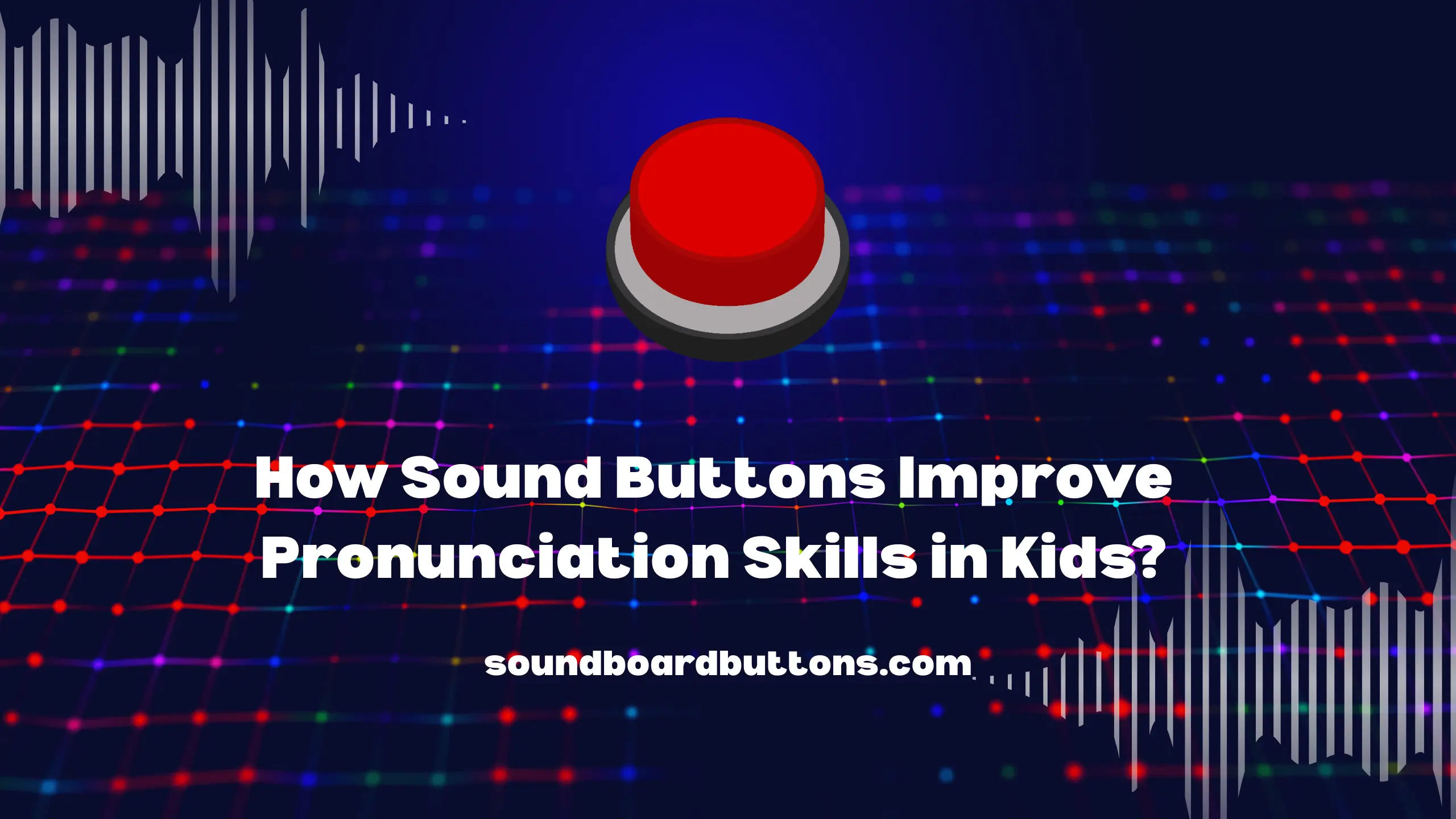As a parent or educator, you're likely no stranger to the challenges of teaching kids to pronounce words correctly. From struggling with tricky sounds to developing confident communication skills, the journey to mastering pronunciation can be a long and winding one.
But what if there was a simple, engaging, and effective way to improve pronunciation skills in kids? Enter sound buttons – an innovative tool that's revolutionizing the way we teach pronunciation.
What are Sound Buttons?
Sound buttons are special digital tools designed to help children learn and practice pronunciation. They're often used in conjunction with pictures, words, or phrases to help kids connect the sounds they hear with the words they see.
By providing a hands-on, multisensory approach to learning, sound buttons make it easier for kids to develop phonological awareness, decode words, and improve their overall pronunciation skills.
How Sound Buttons Improve Pronunciation Skills in Kids
Reinforcing Phonemic Awareness
Phonemic awareness refers to a child’s ability to recognize and differentiate individual sounds within words. Sound buttons excel at reinforcing this skill by isolating specific phonemes. For example:
- A sound button might play the “p” sound when pressed, helping kids distinguish it from similar sounds like “b.”
- Kids can practice identifying phonemes repeatedly until they feel comfortable with their pronunciation.
Breaking Down Words into Syllables
Long or complex words can be challenging for young learners. Sound buttons simplify this process by breaking words into syllables. For example:
- Pressing a button might produce the word “banana” as “ba-na-na,” making it easier for kids to understand how the word is structured.
- This technique helps children develop rhythm and stress patterns, which are essential for clear speech.
Providing Instant Feedback
Sound buttons offer instant feedback, which is essential for language learning. When kids press a button, they hear the correct sound immediately, allowing them to self-correct and try again.
This iterative process builds confidence, and muscle memory, and reinforces correct pronunciation habits. Instant feedback also enables kids to learn at their own pace and take ownership of their learning.
Making Repetition Fun
Repetition is important to mastering pronunciation, but traditional drills can feel monotonous and demotivating. Sound buttons make repetition exciting by turning learning into a game. Kids enjoy pressing buttons, listening to sounds, and challenging themselves to mimic what they hear.
This engaging approach makes practice sessions feel less like work and more like play, motivating kids to repeat and refine their pronunciation skills.
Benefits of Using Sound Buttons for Pronunciation Practice
Sound buttons provide numerous benefits that make them ideal for helping kids with pronunciation. Here are some of the advantages:
Interactive Learning
Unlike passive methods like listening to audio clips, sound buttons encourage kids to actively engage with their learning process. The tactile experience of pressing buttons keeps children focused and interested.
Multisensory Approach
Sound buttons combine auditory, visual, and tactile elements, making them highly effective for teaching pronunciation. This multisensory approach helps kids absorb information better and retain it longer.
Building Confidence
As kids practice and improve their pronunciation with sound buttons, they gain confidence in their speaking abilities. This confidence extends to other areas of communication, including reading aloud and participating in conversations.
Customizable Options
Many sound buttons allow customization, enabling parents and teachers to record specific words or sounds according to a child’s needs. This personalized approach ensures the learning process is targeted and effective.
How to Use Sound Buttons Effectively
Using sound buttons effectively requires thoughtful planning, and by following a few key strategies, you can maximize their impact. To start, begin by introducing basic phonemes or syllables before moving on to complete words, helping kids build a strong foundation in pronunciation. Encourage kids to practice with sound buttons regularly, turning learning sessions into short, focused activities, as repetition is essential for mastering pronunciation.
To make learning fun, incorporate games, such as challenging kids to press the button and repeat the sound correctly for points, or creating a "sound scavenger hunt" where kids match sounds to objects or pictures. Provide positive reinforcement by praising kids for their efforts and improvements, motivating them to keep practicing and enjoying the learning process.
Sound Buttons in Educational Settings
Sound buttons are a versatile tool in classrooms, supporting language learning and enhancing skills in pronunciation, spelling, and reading. Teachers effectively integrate them into lessons, promoting engaging and interactive learning experiences. In educational settings, sound buttons are commonly utilized in various ways, including group activities that foster teamwork and collaboration as kids work together to identify sounds.
An individual practice that allows students to learn at their own pace and receive personalized instruction customized to their needs, and interactive lessons that make learning more dynamic and fun.
Conclusion
Sound buttons are a powerful tool for improving pronunciation skills in kids. By providing a hands-on, multisensory approach to learning, sound buttons make it easier for kids to develop phonological awareness, decode words, and improve their overall pronunciation skills.
Whether you're a parent, educator, or speech therapist, sound buttons are worth exploring. With their help, you can empower kids to become confident, effective communicators and set them up for success in all areas of life.
